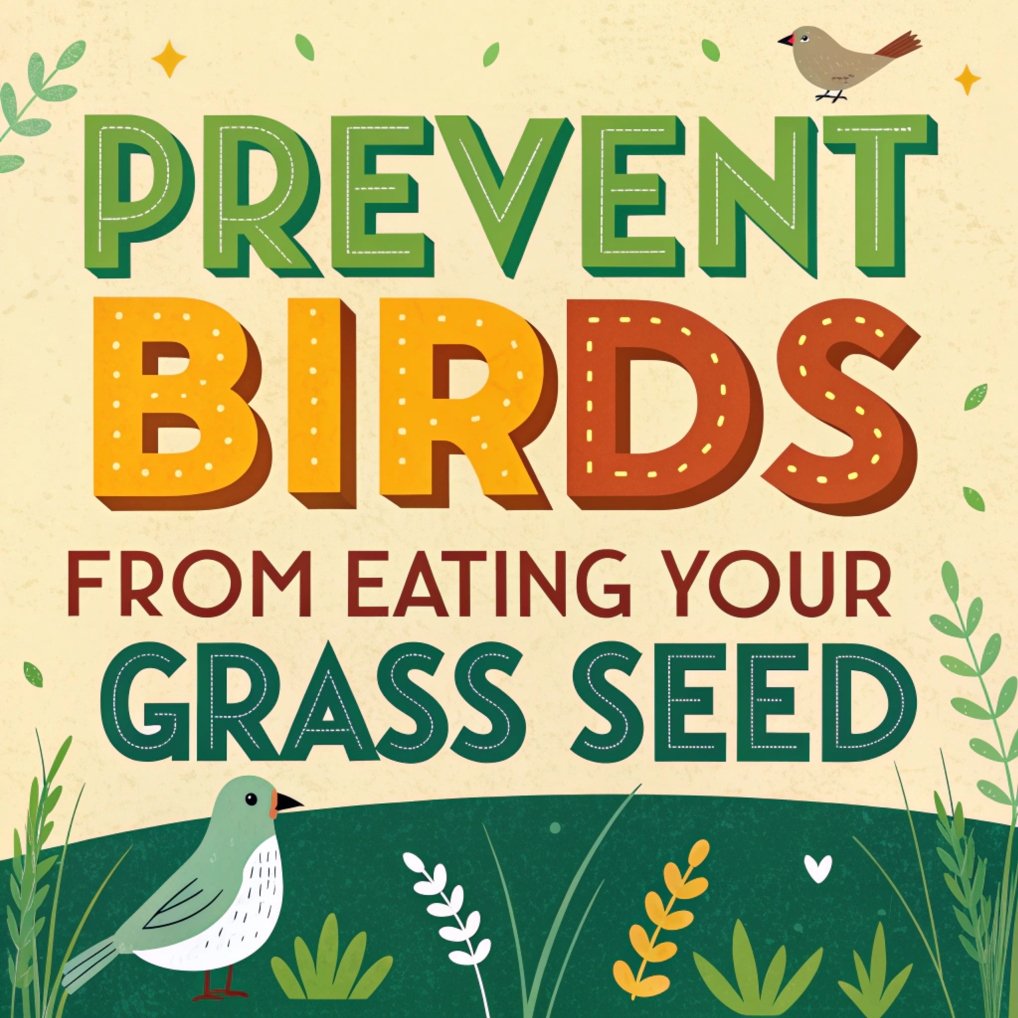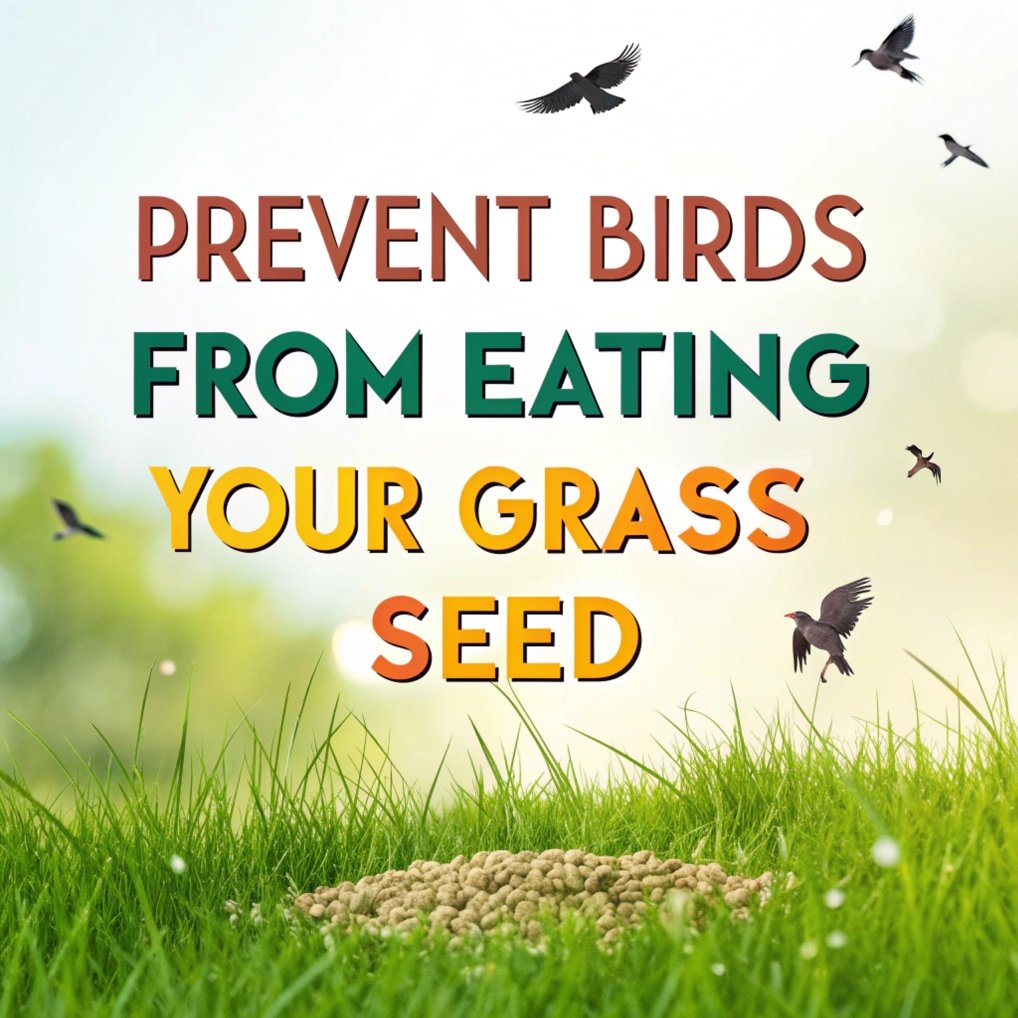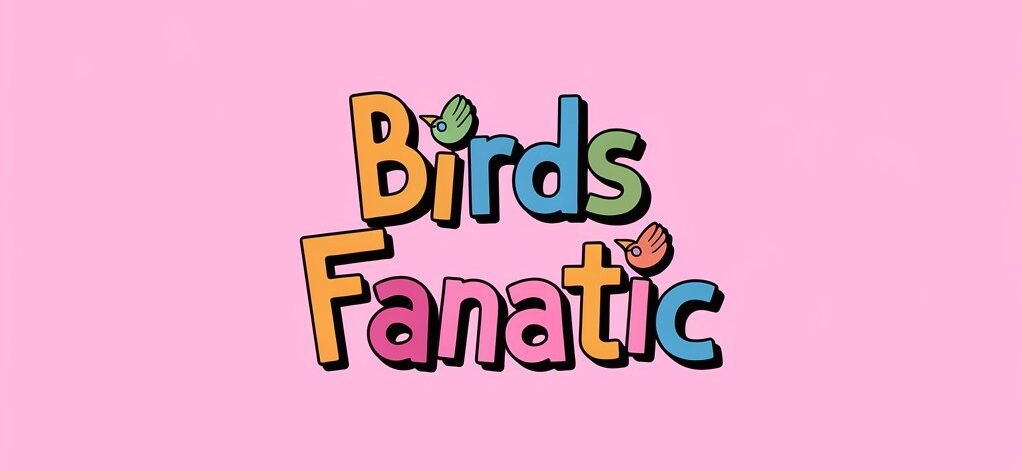Prevent Bird from Eating Your Grass Seed: Effective Strategies for a Thriving Lawn
Establishing a lush, green lawn is a goal for many homeowners, but it often comes with unexpected challenges.
One of the most frustrating obstacles is protecting newly sown grass seed from hungry birds.
These feathered visitors can quickly devour your seeds, leaving bare patches and uneven growth.

Key Takeaways
- Physical barriers like netting and mesh are highly effective in protecting grass seed from birds.
- Mulching techniques can hide seeds while providing additional benefits for germination.
- Visual and auditory deterrents exploit birds’ natural fear responses to keep them away.
- Strategic timing of seeding can significantly reduce bird predation.
- Bird-repellent products offer a chemical approach to deterring birds without harming them.
- Creating distractions with alternative food sources can draw birds away from seeded areas.
- Burlap covering provides protection while allowing water and sunlight to reach seeds.
- Proper lawn preparation and hydro-seeding can make seeds less accessible to birds.
- Maintaining vigilance is crucial for addressing any persistent bird activity.
- A combination of methods is often most effective in protecting grass seed from birds.
Understanding the Bird-Seed Dilemma
Birds are naturally attracted to freshly sown grass seed, viewing it as an easy and nutritious food source. This attraction can pose a significant challenge for gardeners and homeowners trying to establish or rejuvenate their lawns.
The appeal of grass seed to birds is rooted in their instinctive foraging behavior, making your newly seeded lawn an irresistible buffet. Understanding this dynamic is crucial in developing effective strategies to protect your grass seed.
Birds commonly drawn to grass seed include sparrows, finches, starlings, and pigeons. These species are particularly adept at spotting and consuming small seeds, making your lawn vulnerable during the critical germination period.
Recognizing the timing of bird activity is also important. Birds are typically most active during early morning and late afternoon, which coincides with optimal times for seed sowing.
The Importance of Protecting Your Grass Seed

Protecting your grass seed from birds is not just about preserving your lawn’s aesthetic; it’s an investment in your property’s value and overall landscape health.
When birds consume a significant portion of your grass seed, it can lead to uneven growth, bare patches, and a need for reseeding, which is both time-consuming and costly.
A well-established lawn provides numerous benefits, including erosion control, improved air quality, and enhanced curb appeal. By safeguarding your grass seed, you’re ensuring that your lawn can develop a strong root
system and dense growth, which is essential for long-term lawn health and resilience.
Moreover, protecting your grass seed allows for more efficient use of resources. Water, fertilizer, and your time are better utilized when the seeds you’ve sown have the opportunity to germinate and grow without interference from birds.
This efficiency translates to a more sustainable approach to lawn care and landscaping.
Physical Barriers: Netting and Mesh
One of the most effective methods to prevent birds from eating grass seed is the use of physical barriers such as netting or mesh.
These materials create a protective layer over your seeded area, allowing water and sunlight to penetrate while keeping birds at bay.
When installing netting, ensure it’s placed a few inches above the soil surface to allow for seed germination and initial growth. Secure the edges firmly to prevent birds from accessing the seeds from underneath.
Fine mesh netting is particularly effective as it’s difficult for birds to peck through.
For larger areas, consider using bird-proof fencing or floating row covers. These options not only deter birds but also help retain moisture, which is beneficial for seed germination.
Remember to remove the netting or mesh once the grass has established itself to prevent hindering further growth.
Mulching Techniques

Applying a thin layer of mulch over your newly sown grass seed can be an effective deterrent for birds. Straw or hay are popular choices for this method, as they provide coverage without completely blocking sunlight or water.
When mulching, aim for a light covering that obscures the seeds from view but doesn’t smother them.
This approach not only hides the seeds from birds but also offers additional benefits such as moisture retention and temperature regulation, which can enhance seed germination.
For best results, use certified weed-free straw to prevent introducing unwanted plants to your lawn. After spreading the mulch, gently water the area to help it settle and create a more cohesive protective layer.
As the grass grows, the mulch will naturally decompose, adding organic matter to your soil.
Visual Deterrents
Visual deterrents can be highly effective in keeping birds away from your grass seed. These methods work by creating an environment that appears unsafe or unappealing to birds, discouraging them from landing and feeding on your lawn.
One popular visual deterrent is the use of reflective objects. Hanging old CDs, reflective tape, or metallic pinwheels around the seeded area can create flashes of light that startle and confuse birds.
The unpredictable movement and reflections make birds wary of approaching the area.
Another effective visual deterrent is the use of predator decoys. Placing realistic-looking plastic owls, hawks, or even snakes around your lawn can trick birds into believing predators are present.
For maximum effectiveness, move these decoys periodically to prevent birds from becoming accustomed to their presence.
Auditory Deterrents
Auditory deterrents can be a powerful tool in your arsenal against seed-eating birds. These methods exploit birds’ natural fear responses to certain sounds, making your lawn an uncomfortable or threatening environment for them.
One effective auditory deterrent is the use of predator calls. Devices that emit the sounds of birds of prey, such as owls or hawks, can trigger a flight response in smaller birds.
These can be particularly effective when used in combination with visual deterrents like predator decoys.
Another option is to use ultrasonic devices that emit high-frequency sounds unpleasant to birds but inaudible to humans. While these can be effective, it’s important to use them judiciously to avoid disturbing beneficial wildlife or pets.
Timing Your Seeding
Strategic timing of your grass seeding can significantly reduce bird predation. Birds are typically most active during early morning and late afternoon, so consider sowing your seeds outside these peak times.
Planting in the evening can give your seeds a head start, allowing them to settle into the soil overnight before birds become active. Additionally, consider the seasonal timing of your seeding.
Some bird species are more prevalent during certain seasons, so researching local bird populations and migration patterns can inform your planting schedule.
Another timing strategy is to water immediately after seeding. This not only helps the seeds adhere to the soil but also makes them less visible and accessible to birds.
Consistent watering throughout the germination period can further protect your seeds by keeping them moist and less appealing to birds.
Using Bird-Repellent Products
Bird-repellent products offer a chemical approach to deterring birds from your grass seed. These products typically contain substances that are unpalatable or irritating to birds but harmless to plants and other wildlife.
One option is to use bird-repellent sprays that can be applied directly to the seeded area. These sprays often contain natural ingredients like methyl anthranilate, derived from grape seeds, which birds find distasteful.
When using these products, follow the manufacturer’s instructions carefully to ensure effective application and reapply as needed, especially after rain.
Another approach is to use bird-repellent grass seed. These seeds are coated with a substance that tastes unpleasant to birds but doesn’t affect seed germination or grass growth.
While more expensive than regular grass seed, they can be a worthwhile investment in areas with persistent bird problems.
Creating Distractions
Diverting birds’ attention away from your grass seed can be an effective and humane method of protection. This approach involves creating alternative food sources or more attractive areas for birds to focus on, drawing them away from your newly seeded lawn.
One strategy is to set up bird feeders at the perimeter of your property, away from the seeded area. Fill these feeders with seeds that birds find more appealing than grass seed, such as sunflower seeds, millet, or nyjer.
This not only protects your lawn but also allows you to continue enjoying the presence of birds in your garden.
Another distraction method is to create a decoy feeding area. Scatter a small amount of bird-friendly seeds in a designated spot away from your lawn.
This can trick birds into believing they’ve found a better food source, reducing their interest in your grass seed.
Burlap Covering Technique
Using burlap to cover your newly seeded lawn is an effective and eco-friendly method to protect your grass seed from birds. Burlap offers several advantages as a protective covering, making it a popular choice among gardeners and lawn care enthusiasts.
To implement this technique, lay sheets of burlap directly over your seeded area. The loose weave of burlap allows water and sunlight to penetrate, ensuring your seeds receive the necessary elements for germination.
Secure the edges of the burlap with stakes or heavy objects to prevent it from being displaced by wind.
Burlap not only deters birds but also provides additional benefits such as moisture retention and erosion control. It can help regulate soil temperature, creating an ideal environment for seed germination.
Remove the burlap once the grass has sprouted to a height of about an inch to allow for continued growth.
Liquid Bird Repellents
Liquid bird repellents offer a targeted approach to protecting your grass seed. These products are designed to make the seeded area unappealing to birds without harming them or affecting seed germination.
Most liquid repellents contain ingredients that birds find unpleasant to taste or smell. Common active ingredients include methyl anthranilate (derived from grapes) or anthraquinone.
These substances create a sensory aversion in birds, discouraging them from returning to the treated area.
When applying liquid repellents, follow the manufacturer’s instructions carefully. Typically, you’ll need to spray the product evenly over the seeded area. Reapplication may be necessary after heavy rain or irrigation.
While effective, it’s important to use these products responsibly to minimize impact on beneficial insects and other wildlife.
Scarecrow and Decoy Tactics
The use of scarecrows and decoys is a time-honored tradition in deterring birds, and it can be equally effective in protecting your grass seed. These visual deterrents work by creating the illusion of danger or predator presence, making birds wary of approaching your lawn.
Traditional scarecrows can be effective, especially if they incorporate movement. Consider attaching reflective materials or streamers to your scarecrow to enhance its deterrent effect.
For a modern twist, you can use inflatable scarecrows or even kites shaped like birds of prey.
Predator decoys, such as plastic owls or hawks, can be particularly effective. Place these decoys strategically around your seeded area, and remember to move them periodically to prevent birds from becoming accustomed to their presence.
Some decoys even come with motion sensors that trigger movement or sounds when birds approach, adding to their effectiveness.
Proper Lawn Preparation
Proper lawn preparation is crucial not only for successful grass growth but also for minimizing bird attraction to your seeds.
A well-prepared lawn creates conditions that make it harder for birds to access the seeds and more conducive to rapid germination.
Start by thoroughly removing any existing weeds or dead grass. This reduces the likelihood of birds being attracted to your lawn in search of other food sources. Next, ensure your soil is properly tilled and leveled.
A smooth surface makes it easier to apply an even layer of seeds and protective coverings.
Consider incorporating the seeds into the top layer of soil rather than simply scattering them on top. This method, known as overseeding, makes the seeds less visible and accessible to birds.
After seeding, lightly rake the area to further cover the seeds with a thin layer of soil.
Hydro-seeding Method
Hydro-seeding is an innovative technique that can significantly reduce bird predation on grass seeds. This method involves spraying a mixture of seeds, water, fertilizer, and mulch onto the prepared soil surface.
The key advantage of hydro-seeding in bird deterrence is that the seeds are embedded in a slurry mixture, making them less visible and accessible to birds.
The mulch component of the mixture also helps to camouflage the seeds while providing a nurturing environment for germination.
Hydro-seeding typically results in faster germination and more even coverage compared to traditional seeding methods.
While it may require professional equipment or services, the reduced risk of bird damage and improved germination rates can make it a cost-effective option for larger areas or persistent bird problems.
Maintaining Vigilance
Even with preventive measures in place, maintaining vigilance is crucial to ensure the successful establishment of your grass seed.
Regular monitoring allows you to identify and address any issues promptly, including persistent bird activity or areas where protective measures may have failed.
Conduct daily inspections of your seeded area, especially during the first few weeks after planting. Look for signs of bird activity such as disturbed soil, exposed seeds, or bird droppings.
If you notice increased bird presence, be prepared to implement additional deterrent methods or reinforce existing ones.
Keep an eye on the weather forecast as well. Heavy rain can wash away protective coverings or dilute liquid repellents, necessitating reapplication. Similarly, periods of drought may require additional watering to keep seeds moist and less attractive to birds.
FAQs
How long do I need to protect my grass seed from birds?
You should protect your grass seed from birds until it has germinated and grown to a height of about 1-2 inches. This typically takes 2-3 weeks, depending on the grass type and growing conditions.
Can I use pesticides to keep birds away from my grass seed?
It’s not recommended to use pesticides to deter birds. Many pesticides can be harmful to birds and other wildlife. Instead, opt for bird-friendly deterrent methods like netting, visual deterrents, or bird-repellent products specifically designed for this purpose.
Will covering my grass seed with straw keep birds away?
Covering grass seed with a thin layer of straw can help deter birds by making the seeds less visible. However, it’s important not to apply the straw too thickly, as this can prevent sunlight from reaching the seeds and hinder germination.
Are there any bird-friendly ways to protect my grass seed?
Yes, there are several bird-friendly methods to protect your grass seed. These include using physical barriers like netting, creating distractions with bird feeders placed away from the seeded area, and using non-toxic, taste-based repellents.
How often should I water my grass seed to prevent bird damage?
Watering your grass seed regularly not only promotes germination but also helps deter birds. Aim to keep the soil consistently moist but not waterlogged. This usually means light watering 1-2 times daily, depending on your climate and soil conditions.

Hello, I’m Amelia White, the founder of birdsfanatic.com. As a lifelong bird enthusiast and spiritual seeker, I’ve always been fascinated by the mystical connections between birds and the human experience. On this site, I share my knowledge and insights into the symbolic meanings and spiritual significance of various bird species, exploring their roles in mythology, folklore, and cultural traditions. Join me on this journey into the world of birds, where we’ll discover the hidden wisdom and guidance that these magnificent creatures have to offer.







